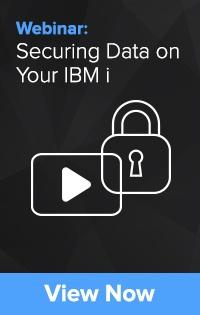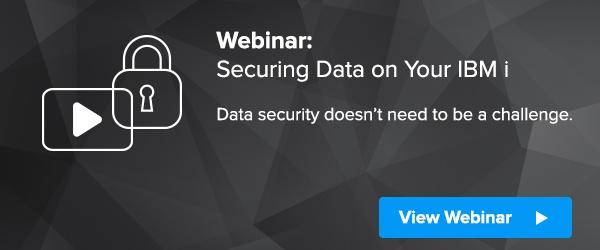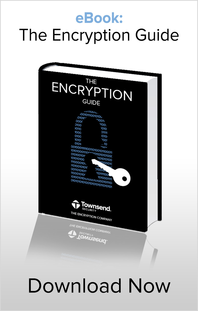In an unprecedented October surprise, Wikileaks dumped thousands of emails onto the internet from the Democratic National Committee (DNC), most of them concerning Hillary Clinton’s presidential campaign. Later, in defending this move, Wikileaks founder Julian Assange, in an interview with FOX News, “said a 14-year-old could have hacked into the emails of Hillary Clinton's campaign chairman,” reported the Daily Mail. Assange later revealed in the interview that John Podesta’s, Hillary’s campaign chairman, password was 'password.' Politifact has gone on to challenge that assertion, saying that “Podesta was using a Gmail account, and Google doesn’t allow users to make their passwords ‘password.’”
Whatever John Podesta’s password was, it has sparked a good deal of renewed interest in good password management. And far be it from me to downplay this crucial bit of data security. We still have a long way to go. In fact, SplashData just completed their survey of over 5 million people’s passwords and found that over 10% of people still use the most commonly guessable passwords like:
- password
- 123456
- qwerty
- passw0rd
- Password1
- zaq1zaq1
If you use any of these, stop it. Now.
But if that is all that we learn from the hack and subsequent data breach, we have missed the lesson. As far back as June of 2016, it was widely reported, by the likes of Brian Krebs and Jeremy Kirk, that the DNC was vulnerable to attacks do to systemic weaknesses in cybersecurity. In fact, in Jeremy Kirk’s article, it was noted that a press assistant emailed everyone a new password after a recent breach (a strong password at that: 'HHQTevgHQ@z&8b6'). The irony is, some of the email accounts had been compromised. The hackers needed only to open the email and use the new password.
Strong passwords are not enough to rebuff the efforts of hackers to gain entry and to render the data useless in case of a breach. We need proven security measures in order to keep the data safe.
The data security measures below reflect specific things you can do to secure your data-at-rest in general. While there are more more specific measures you can take for email servers, it is important to remember that organizations have sensitive data everywhere, not just in emails. That being said, since even seemingly benign emails at the DNC can blow up into political controversy, they probably need to follow these along with more email specific recommendations. Follow along to find some of the best methods your organization should be using today to better secure your data security posture.
Multi Factor Authorization
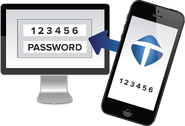 As we have already mentioned, usernames and passwords, by themselves, are not enough to authenticate users. Truly strong passwords are hard to manage and remember. And once a system is compromised, login credentials can be scraped with keyloggers, malware, or other such attacks.
As we have already mentioned, usernames and passwords, by themselves, are not enough to authenticate users. Truly strong passwords are hard to manage and remember. And once a system is compromised, login credentials can be scraped with keyloggers, malware, or other such attacks.
You need an external verification process. You need multi factor authentication (MFA). MFA has traditionally relied on verifying you by two of three ways:
- Something that you know (i.e.: username, password, challenge questions/responses, one-time-use code, etc.)
- Something that you have (i.e.: token, RFID cards or key fobs, mobile phones, etc.)
- Something that you are (biometrics)
Each of these methods have their advantages and drawbacks. For example:
- PRO: do not require any physical equipment on the user side
- CON: do rely on the user’s memory, which can be fuzzy when it comes to precisely writing the correct response
- CON: are vulnerable to deduction through inspection of social media accounts, etc.
- CON: are “something you know” and so fall into the same category as login credentials, thereby not taking advantage of any other kind of authentication
- Physical Equipment: (like RFID cards and tokens)
- PRO: do not rely on a person’s memory
- CON: can be stolen or lost
- CON: require active device management from an administrator
One method of authentication that is gaining ground because of its ease of use is authentication that relies on OAuth (an open standard for authorization). It does not rely on physical fobs (which can be lost) or an SMS text (which can be intercepted). It, instead, relies on cryptographic code that generates a time specific one-time-use codes based on the user’s secret key and the time. Since the code operates simultaneously (and separately) on the user’s device (typically a mobile phone) and on an internal server, with no need for an internet connection; it greatly reduces downtime because of internet issues and hackers intercepting the one-time-use code.
Encryption
 Strong, Advanced Encryption Standard (AES) encryption as put forward by NIST should be used to encrypt all sensitive customer and company data. In 2001 NIST formally adopted the AES encryption algorithm. Since then, it has been proven countless times to render the data useless in the event of a breach. In fact, it would take the fastest supercomputer 375 x 1050 years to brute force AES encryption by running through all permutations of an AES 256-bit encryption key. In comparison, the Sun will reach its Red Giant stage in 54 x 108 years, engulfing Mercury, Venus, and possibly Earth. In other words, the Earth will be incinerated by the then rapidly expanding Sun before a hacker could effectively crack AES encryption through brute force.
Strong, Advanced Encryption Standard (AES) encryption as put forward by NIST should be used to encrypt all sensitive customer and company data. In 2001 NIST formally adopted the AES encryption algorithm. Since then, it has been proven countless times to render the data useless in the event of a breach. In fact, it would take the fastest supercomputer 375 x 1050 years to brute force AES encryption by running through all permutations of an AES 256-bit encryption key. In comparison, the Sun will reach its Red Giant stage in 54 x 108 years, engulfing Mercury, Venus, and possibly Earth. In other words, the Earth will be incinerated by the then rapidly expanding Sun before a hacker could effectively crack AES encryption through brute force.
The good news, AES encryption comes standard in most database’s native encryption libraries. Along with those free versions, there are a number of commercial products that rely on AES encryption available. So finding a way to secure your data with AES encryption will be fairly easy. That being said, it is important to understand the development time and performance hits each solution takes. Native encryption libraries are generally free but take a bit of development time. Commercial solutions take less time to deploy but many times are file/folder level encryption products and have performance hits because they take a longer to encrypt/decrypt than column level encryption products.
Centralized Encryption Key Management
 As we mentioned, AES encryption is extremely difficult to brute force attack. It’s strength lies in its ability to encrypt the data with a very long key (typically 256-bit). But it’s strength is also its weakness. If your encryption key becomes known to a bad actor, your encrypted data becomes compromised. That is why any encryption strategy worth its salt will include proper, centralized encryption key management.
As we mentioned, AES encryption is extremely difficult to brute force attack. It’s strength lies in its ability to encrypt the data with a very long key (typically 256-bit). But it’s strength is also its weakness. If your encryption key becomes known to a bad actor, your encrypted data becomes compromised. That is why any encryption strategy worth its salt will include proper, centralized encryption key management.
When defending your encryption key with full lifecycle key management, consider these things:
- The encryption keys should be logically or physically separated from the encrypted data. This way, if the encrypted data is compromised, they will not be able to decipher it.
- The encryption keys should only be generated with a cryptographically secure pseudo-random number generator (CSPRNG).
- Restrict administrator and user access to the keys to the least amount of personnel possible.
- Create clear separation of duties to prevent improper use of the keys by database administrators.
- Manage the full lifecycle of the keys from key creation, activation, expiration, archive, and deletion.
For a more comprehensive view of encryption key management, please view the Definitive Guide to Encryption Key Management.
Real Time Log Monitoring
Forrester, in 2013, promulgated the cybersecurity model of “Zero Trust.” In it, they put forward the motto: “never trust, always verify.” By this, they mean that all users should be authenticated, restricted to the least amount of data possible, and verified that they are doing the right thing through real-time monitoring. Of which, they advocate for:
- Real Time Event Collection in which you collect and log all events, in real time.
- Event Correlation in which you analyze all events and narrow in on the ones that do not conform to expected patterns.
- Resolution Management in which you investigate all suspect behavior and either classify them as either benign or a possible threat for further investigation.
There are many Security Information Event Management (SIEM) tools available that accomplish this. For more information, refer to Gartner’s SIEM Magic Quadrant to find the tools that fit your needs.
Final Thoughts
Defending data-at-rest is a never ending struggle of building robust defenses and continuous improvement. But, it's not a question of if, but when, a data breach will happen. And if the DNC data breaches taught us anything is that breaches can be embarrassing and costly. Since hackers are only growing more sophisticated in their techniques, it is incumbent upon us to respond in ever increasing levels of agility and sophistication of our own.
The old models of the high, guarded perimeter with complex passwords to gain entry are just not enough. We need a higher degree of authentication, sensitive data rendered useless, and constant real-time monitoring of all traffic. You data depends on it.

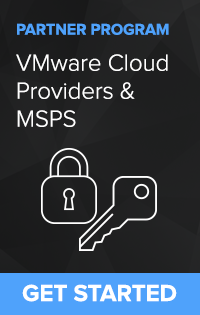 One of our MSP partners shared this bit of wisdom:
One of our MSP partners shared this bit of wisdom:
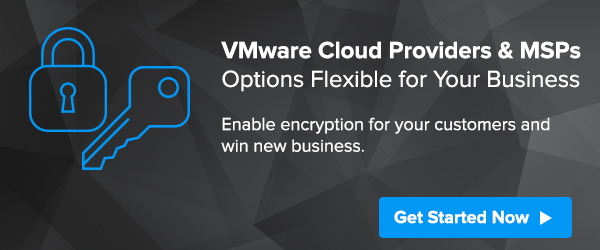
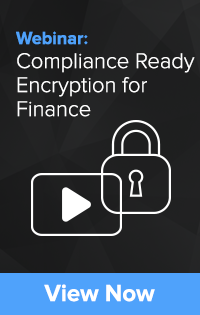
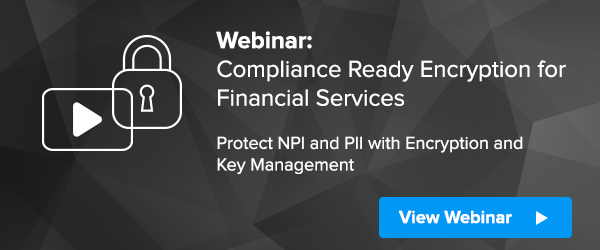
 As we have already mentioned, usernames and passwords, by themselves, are not enough to authenticate users. Truly strong passwords are hard to manage and remember. And once a system is compromised, login credentials can be scraped with keyloggers, malware, or other such attacks.
As we have already mentioned, usernames and passwords, by themselves, are not enough to authenticate users. Truly strong passwords are hard to manage and remember. And once a system is compromised, login credentials can be scraped with keyloggers, malware, or other such attacks. Strong, Advanced Encryption Standard (AES) encryption as put forward by
Strong, Advanced Encryption Standard (AES) encryption as put forward by  As we mentioned, AES encryption is extremely difficult to brute force attack. It’s strength lies in its ability to encrypt the data with a very long key (typically 256-bit). But it’s strength is also its weakness. If your encryption key becomes known to a bad actor, your encrypted data becomes compromised. That is why any encryption strategy worth its salt will include proper, centralized encryption key management.
As we mentioned, AES encryption is extremely difficult to brute force attack. It’s strength lies in its ability to encrypt the data with a very long key (typically 256-bit). But it’s strength is also its weakness. If your encryption key becomes known to a bad actor, your encrypted data becomes compromised. That is why any encryption strategy worth its salt will include proper, centralized encryption key management. 

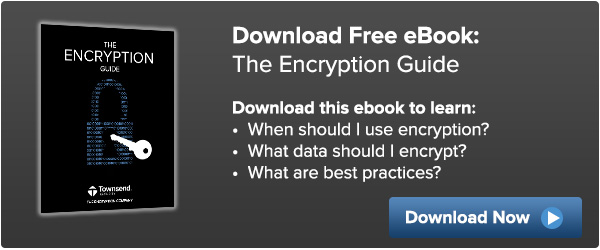
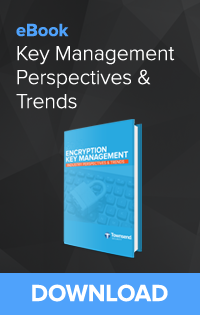
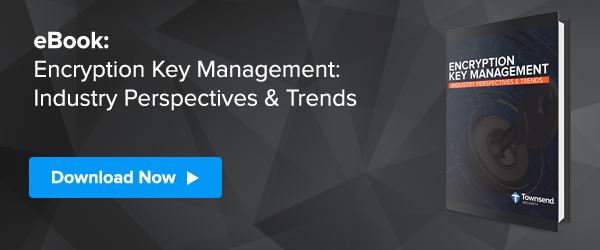



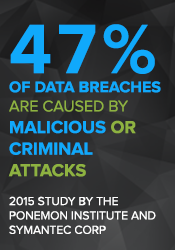 2015 was a year of large and sometimes very controversial data breaches across a broad industry spectrum. The Identity Theft Resource Center
2015 was a year of large and sometimes very controversial data breaches across a broad industry spectrum. The Identity Theft Resource Center 
